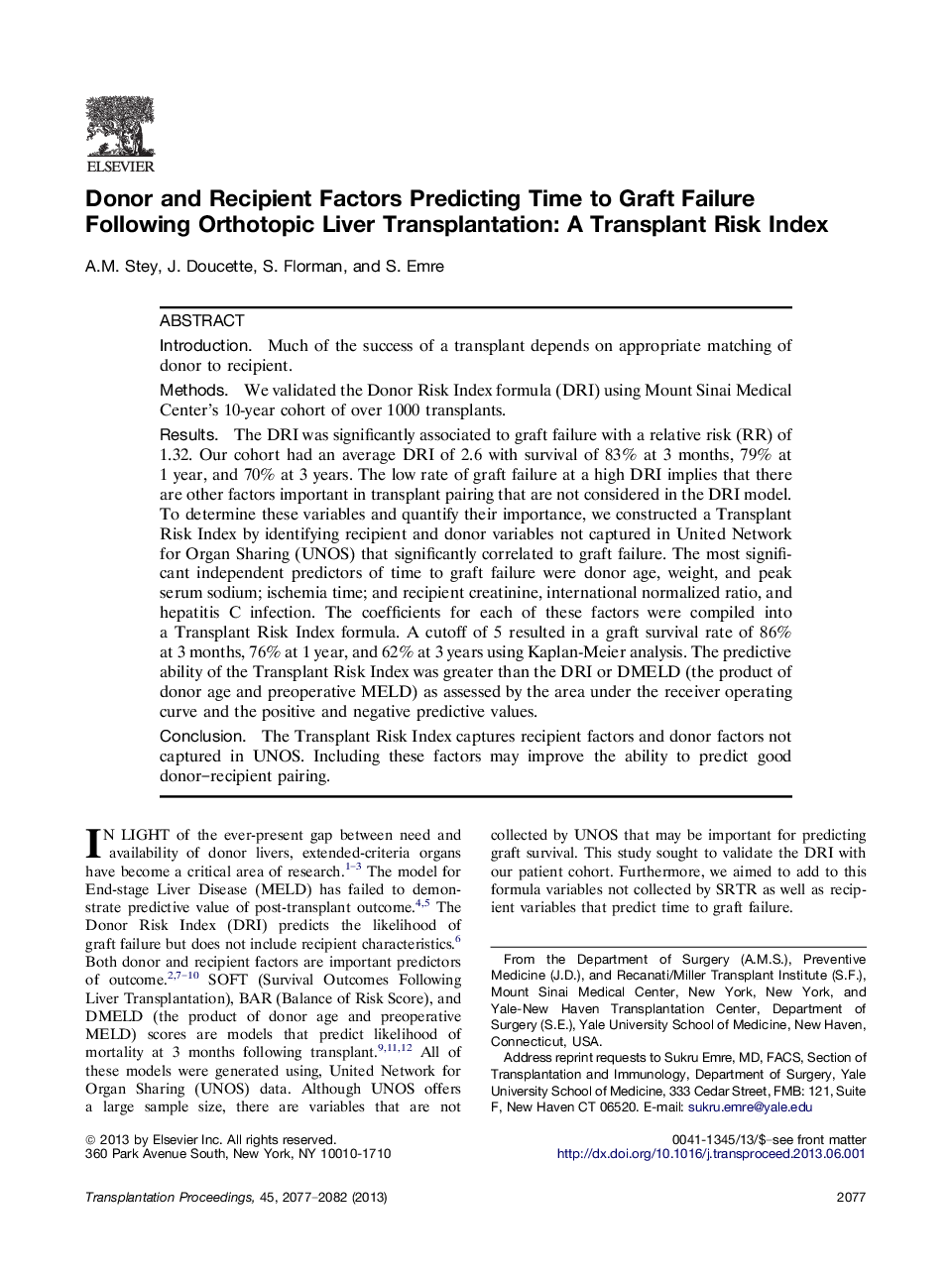| Article ID | Journal | Published Year | Pages | File Type |
|---|---|---|---|---|
| 4255632 | Transplantation Proceedings | 2013 | 6 Pages |
IntroductionMuch of the success of a transplant depends on appropriate matching of donor to recipient.MethodsWe validated the Donor Risk Index formula (DRI) using Mount Sinai Medical Center's 10-year cohort of over 1000 transplants.ResultsThe DRI was significantly associated to graft failure with a relative risk (RR) of 1.32. Our cohort had an average DRI of 2.6 with survival of 83% at 3 months, 79% at 1 year, and 70% at 3 years. The low rate of graft failure at a high DRI implies that there are other factors important in transplant pairing that are not considered in the DRI model. To determine these variables and quantify their importance, we constructed a Transplant Risk Index by identifying recipient and donor variables not captured in United Network for Organ Sharing (UNOS) that significantly correlated to graft failure. The most significant independent predictors of time to graft failure were donor age, weight, and peak serum sodium; ischemia time; and recipient creatinine, international normalized ratio, and hepatitis C infection. The coefficients for each of these factors were compiled into a Transplant Risk Index formula. A cutoff of 5 resulted in a graft survival rate of 86% at 3 months, 76% at 1 year, and 62% at 3 years using Kaplan-Meier analysis. The predictive ability of the Transplant Risk Index was greater than the DRI or DMELD (the product of donor age and preoperative MELD) as assessed by the area under the receiver operating curve and the positive and negative predictive values.ConclusionThe Transplant Risk Index captures recipient factors and donor factors not captured in UNOS. Including these factors may improve the ability to predict good donor–recipient pairing.
